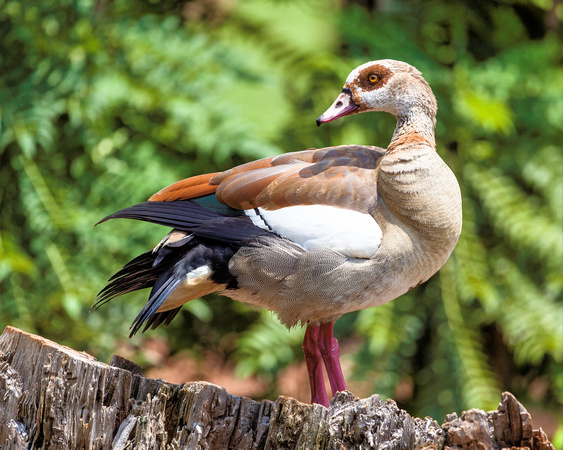Egyptian Goose (Alopochen aegypticus)
Egyptian Goose (Alopochen aegypticus)
27 inches long
Widely distributed over Africa and Southern Europe and non-native Egyptian geese are now proliferating in Texas having been imported as decorative birds.
The Egyptian Goose is not really a goose, but is actually a Shelduck. It is a cross between a goose and a duck. It has many duck-like characteristics, but it also has some external goose-like traits. It is the most widespread of all the African waterfowl. These old-world shelducks were domesticated by the ancient Egyptians, who considered them to be sacred. The Romans and the Greeks also kept Egyptian Geese in domestic flocks.
Seen in pairs or often in large flocks, and usually are found near water but may be seen feeding on open land away from water. Large flocks may be seen in wheat producing areas and may become a pest to grain farmers.
They eat mainly soft vegetable substances, especially young grass and wheat, seeds, leaves, grass, berries, and herbs. They also eat locusts, worms, insects, and small animals.
They are terrestrial and spend a lot of time ashore. They are quarrelsome and aggressive, being very intolerant of other birds, including their own kind. They can be vicious.
Nest in various situations, such as matted vegetation near water, in hollow trees, or even on ledges of precipices; most frequently in the old nests of other species.
Photographed at Emmarentia Dam, Johannesburg, South Africa.


